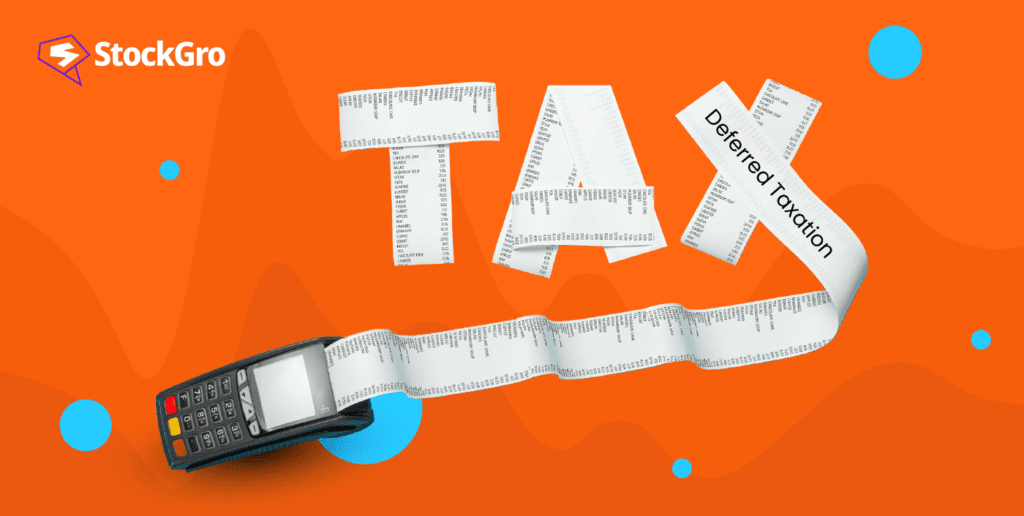
Have you ever wondered how businesses deal with taxes? Taxes are a big part of running a business, and they can affect the profitability and cash flow of a business. But taxes are not always straightforward. Sometimes, there is a difference between the tax that a business pays to the government and the tax that it reports on its financial statements. This difference is called deferred taxation.
So, what is a deferred tax in simpler terms? Deferred taxation is the accounting method that reflects the gap between the tax that a business owes to the government and the tax that it shows on its financial statements. This method is crucial for businesses to comprehend and handle because it can directly impact their worth and future expansion. Moreover, businesses also leverage deferred taxation to minimise the tax burden and design their tax approach.
With that being said, let’s look at how deferred taxation works in the business context and how it may impact the financial performance and tax planning of a business.
You may also like: Tax saving scheme in India 2023 [Explained]
The difference between current tax and deferred tax
Before we dive into deferred taxation, let’s first understand the difference between current tax and deferred tax. These are two types of taxes that a business has to deal with on its financial statements.
Current tax: Current tax is the amount of tax that a business pays to the government in the current year, based on the taxable income and the tax rate of that year. It is the sum due (or recoverable) from past and present taxable gains (or losses). As a result, at the financial reporting date, the current tax pertains to things that have already happened or accumulated for the taxpayer.
For example, if a business has a taxable income of ₹1,000,000 and the tax rate is 30%, the current tax that the business will pay in the current year is 300,000 (30% of ₹1,000,000).
Deferred tax: The amount of tax that a company anticipates paying or receiving in the future, depending on the short-term variations between its taxable and accounting income, is known as deferred income tax.
For example, if a business has an accounting income of 1,200,000 and a taxable income of 1,000,000 in the current year and the tax rate is 30%, the deferred tax that the business will have in the current year is 60,000 (30% of 200,000).
But what are these temporary differences, and how do they create deferred tax? Let’s find out in the next section.
The types of deferred tax: Deferred tax asset and deferred tax liability
Temporary differences are the differences between the income and expenses that a business recognises on its financial statements and the income and expenses that the government recognises for tax purposes. These differences arise because of the different accounting methods and rules that a business and the government use to measure and report the business’s financial transactions.
Depending on the direction and timing of these differences, deferred tax can be either an asset or a liability for the business.
Deferred tax asset (DTA)
The amount of taxes that a business has overpaid or may overpay in the current year and that it may be able to recover or lower in the future is known as a deferred tax asset. When the taxable income of a business is higher than its accounting income in the current year and when this difference will reverse in the future, a deferred tax asset tends to arise.
Also read: Old vs. New – Which income tax regime is better for FY 2023-24?
Deferred tax liability (DTL)
A business’s deferred tax liability is the total amount of taxes it has underpaid or will underpay this year and will have to pay or incur an increase in subsequent years. A deferred tax liability occurs when a business’s accounting income in the current year exceeds its taxable income, and this gap is expected to reverse in subsequent years.
The deferred tax asset and the deferred tax liability will cancel each other out over the life of the asset or the debt, and the total tax that the business will pay will be the same as if it had used the same accounting method and rule for both purposes.
Examples of deferred tax liability in the business context
Now that we have learned the types of deferred tax, let’s look at some deferred tax liability examples when it comes to business.
Revenue recognition
Some companies may record revenue on their financial statements prior to receiving payment from customers or before providing them with goods or services. This is called the accrual method of accounting.
Nevertheless, until the companies truly receive or send the money, the government might not permit them to record it on their tax returns. This is what we know as the cash method of accounting. Because businesses will have to pay more tax later on when they record the revenue on their tax returns, this results in a deferred tax liability for them.
Prepaid expenses
Paying for some expenses in advance, such as rent, insurance, or subscriptions, is what some businesses do. These expenses are referred to as prepaid expenses, and they are shown as assets on the financial statements of the businesses.
However, these expenses may not be deducted from the taxable income of businesses by the government until they are consumed or used. This leads to a deferred tax liability for the businesses because more tax will be due in the future when the expenses are deducted from their taxable income.
Inventory valuation
Some businesses may calculate their inventory value differently on their financial statements and on their tax returns. For example, a business may use the FIFO (first-in-first-out) method for accounting purposes and the LIFO (last-in-first-out) method for tax purposes. It could lead to differences in the inventory value between the financial and tax accounts, which would cause deferred tax liabilities.
These are some of the most common examples that may lead to a deferred tax liability on the balance sheet. There may be other sources of deferred tax liability, depending on the specific accounting policies and tax laws that apply to a business.
Also read: Discounted cash flow – Concept and computation
Conclusion
One significant factor that may affect cash flow is deferred tax assets and liabilities. Defer, in literal terms means to postpone. So, deferred tax is a concept that deals with the tax payable in the future due to differences in accounting methods. If you own a business, deferred tax assets and expenses are one thing that is crucial to understand for a better tax approach and cash flow management.

